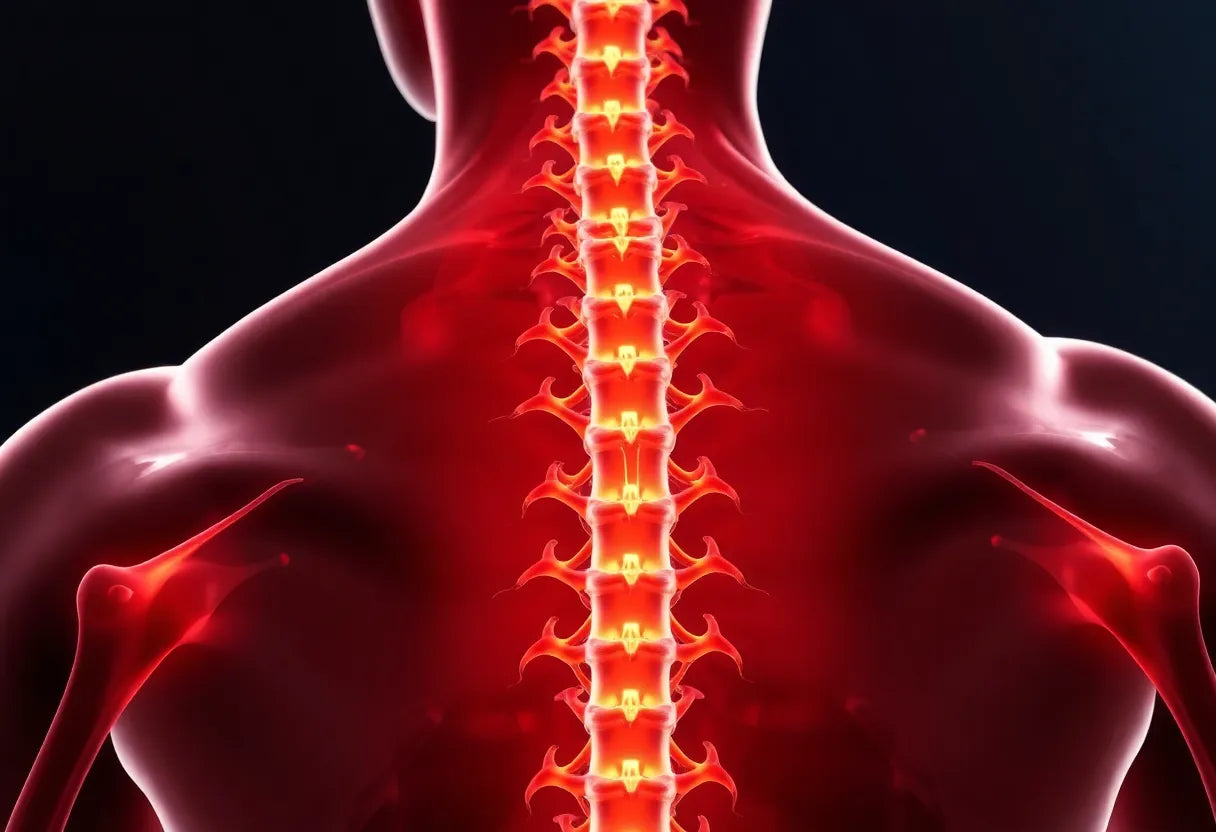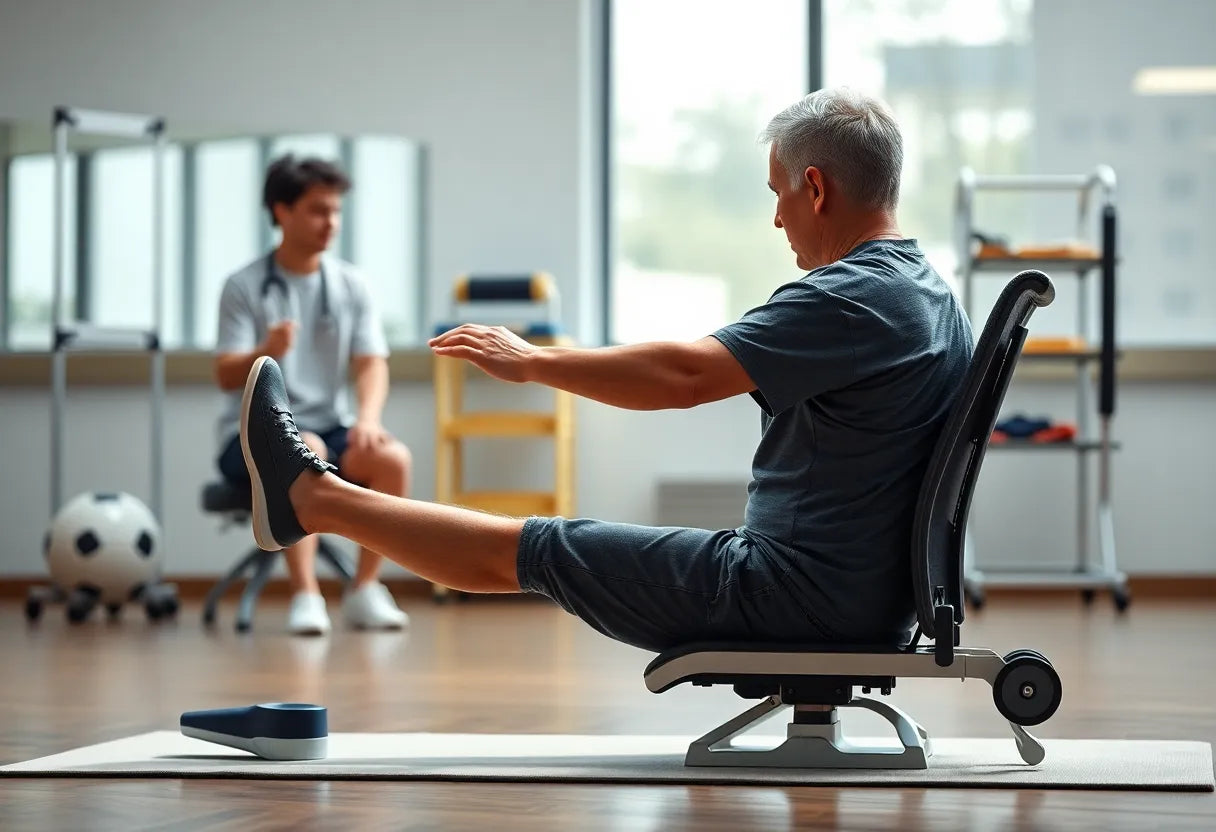Back pain is a common ailment affecting millions of people worldwide, often disrupting daily life and limiting physical activity. Whether it's a dull ache or sharp pain, the discomfort can significantly impact one's quality of life. As a result, many individuals seek effective ways to manage and alleviate their symptoms. Among the various methods available, exercise stands out as a primary intervention for managing back pain.
Recent meta-analyses and systematic reviews have underscored the importance of exercise in managing back pain. These studies highlight that engaging in regular physical activity can significantly reduce pain levels and improve overall functionality. Unlike medication or surgery, exercise offers a non-invasive solution that not only addresses symptoms but also enhances overall physical health.
why exercise matters for back pain relief
Exercise plays a crucial role in the management of back pain by strengthening the muscles that support the spine, improving flexibility, and enhancing posture. This is particularly important because a strong, flexible back is less likely to succumb to injury and pain. Furthermore, exercise can increase blood flow to the affected area, promoting healing and reducing inflammation.
Specific exercises have been identified as particularly effective in reducing back pain. These include core stability exercises, Pilates, and mind-body practices such as yoga and Tai Ji. These exercises not only help in alleviating pain but also improve mobility and strengthen the core muscles, which are essential for maintaining a healthy back.
evidence-based benefits of back pain exercises
The effectiveness of these exercises is supported by numerous studies, which consistently show that they provide significant benefits for individuals suffering from back pain. For instance, Pilates has been ranked as one of the most effective exercise types for reducing pain and disability. Similarly, mind-body exercises like yoga and Tai Ji are known for their ability to improve flexibility and promote relaxation, which can be particularly beneficial for those experiencing chronic pain.
By incorporating these exercises into a regular routine, individuals can experience a marked reduction in pain and an improvement in their overall quality of life. This approach not only offers immediate relief but also serves as a preventive measure against future episodes of back pain.
In the following sections, we will delve into specific exercises that have been proven to be effective in managing back pain. These exercises are not only evidence-based but also practical for everyday use, making them accessible to anyone looking to improve their back health. Whether you're dealing with chronic pain or looking to prevent future issues, these exercises can be an invaluable part of your wellness routine.
evidence-based exercise recommendations for back pain relief
Recent insights from top-ranking studies highlight the effectiveness of specific exercise regimens in alleviating back pain. Among these, Pilates, core stability exercises, and mind-body practices like yoga and Tai Ji stand out for their superior outcomes in pain reduction and improvement of functionality. These exercises have been shown to outperform other methods, such as simple stretching or the McKenzie method, in delivering significant relief and enhanced mobility.
Pilates, in particular, has been ranked as the most effective exercise for reducing both pain and disability, with a 93% probability of pain reduction and a 98% probability of disability improvement. Mind-body exercises, including yoga and Tai Ji, also play a crucial role in enhancing flexibility and promoting relaxation, which are essential for managing chronic pain. Core stability exercises further support the spine and improve posture, making them integral to a comprehensive back pain management strategy.
recommended exercises for back pain relief
Incorporating a variety of exercises into your routine can lead to significant improvements in back pain. Below are some of the most effective exercises, focusing on core stability, Pilates, and mind-body techniques:
1. core stability exercises
Planks: To perform a plank, begin by lying face down. Lift your body by balancing on your forearms and toes, keeping your body in a straight line from head to heels. Hold this position for 30 seconds to one minute, ensuring your core is engaged and your back remains straight.
Bridges: Lie on your back with your knees bent and feet flat on the floor. Lift your hips towards the ceiling, creating a straight line from your shoulders to your knees. Hold for a few seconds before lowering back down. This exercise targets the glutes and lower back muscles, promoting strength and stability.
2. pilates
Hundred Exercise: Lie on your back with your legs in a tabletop position. Lift your head and shoulders off the ground, extend your arms by your sides, and pulse them up and down while inhaling for five counts and exhaling for five counts. This classic Pilates move focuses on core engagement and controlled breathing.
Roll-Up: Begin lying flat on your back with your arms extended overhead. Slowly roll up, vertebra by vertebra, reaching towards your toes. This exercise enhances spinal flexibility and strengthens the core.
3. yoga
Cat-Cow Stretch: Start on your hands and knees. Arch your back while inhaling (cow position), then round your back while exhaling (cat position). This gentle stretch improves spinal flexibility and relieves tension.
Child’s Pose: Kneel on the floor, sit back on your heels, and stretch your arms forward on the ground. This resting pose calms the mind and stretches the back muscles.
4. tai ji
Basic Tai Ji Sequence: Practice a simple Tai Ji sequence focusing on slow, controlled movements and deep breathing. This practice promotes relaxation, body awareness, and can be particularly beneficial for back pain relief.
5. aquatic therapy
Water Walking: Walk in a pool with water at waist height. The buoyancy reduces stress on the back while providing resistance for muscle strengthening. This low-impact exercise is ideal for those with significant pain or mobility issues.
structuring an effective exercise program
Creating a structured exercise program is essential for achieving optimal results in back pain relief. It is recommended to start with 1–2 sessions per week, each lasting less than 60 minutes. Gradually increase the intensity and frequency over a period of 3–9 weeks. Combining different types of exercises, such as core stability, strength training, and mind-body practices, can enhance overall effectiveness and lead to long-term improvements.
By adhering to a consistent exercise routine, individuals can experience substantial relief from back pain and improve their overall physical health. It is important to listen to your body, progress at your own pace, and consult with a healthcare professional if you experience any discomfort or worsening of symptoms. With dedication and the right approach, back pain can become a manageable aspect of daily life.

Lumbar support belt
Adjustable lumbar belt for lower back support and pain relief during daily activities.
additional exercise considerations for back pain relief
To maximize the benefits of back pain exercises, consider integrating a variety of exercise types into your routine. Strength training and aerobic activities can complement core stability, Pilates, and mind-body exercises, providing a well-rounded approach to pain management. Consistency is key, and patience is essential, as improvements in back pain relief often occur gradually over time.
home vs. supervised training
Both home-based routines and supervised gym sessions can effectively improve back pain symptoms. While supervised programs may offer slightly better outcomes due to professional guidance and motivation, home exercises provide convenience and flexibility. To set up a home exercise space, ensure you have a comfortable mat, sufficient space to move, and access to online resources or apps offering guided sessions.
injury prevention and common mistakes
To prevent injuries during exercises, focus on maintaining proper form and avoiding overexertion. Common mistakes include holding your breath, using improper alignment, and neglecting warm-ups. Always listen to your body and stop if you experience sharp pain. Resources like the Mayo Clinic and Physiopedia offer valuable tips for safe exercise practices.
frequently asked questions
is pilates or yoga better for back pain?
Both Pilates and yoga offer significant benefits for back pain relief. Pilates focuses on strengthening the core and improving posture, while yoga enhances flexibility and promotes relaxation. Combining both can provide a comprehensive approach to managing back pain.
how often should I exercise to make a difference?
For effective back pain management, aim for 1–2 exercise sessions per week, gradually increasing to 3–4 sessions as your body adapts. Each session should last between 30 to 60 minutes, with a focus on consistency over time.
what if my pain worsens during exercise?
If you experience increased pain during exercise, stop immediately and consult a healthcare professional. They can provide guidance on modifying exercises and ensuring they are appropriate for your condition.
can I do these exercises at home without equipment?
Yes, many back pain exercises can be performed at home with minimal or no equipment. Exercises like planks, bridges, and yoga poses require only a comfortable space and a mat.
are there any exercises I should avoid with back pain?
Exercises that involve heavy lifting, high impact, or excessive twisting may exacerbate back pain. Focus on low-impact activities and consult with a healthcare provider to tailor exercises to your needs.

Men's Posture Shirt™ Zipper - Black
Patented shirt designed to improve posture, activate muscles, and provide pain relief.
conclusion
Regular exercise is a vital component in managing back pain and enhancing quality of life. By incorporating a variety of exercises and adhering to a consistent routine, individuals can achieve significant pain relief and improved functionality. Always consult healthcare professionals for personalized advice and to ensure exercises are suitable for your specific condition. Embrace the journey toward a healthier back with patience and dedication.
Källor
- Department of Veterans Affairs. (2022). "Managing Low Back Pain." Veterans Health Administration.
- Mayo Clinic Staff. (n.d.). "Back Pain." Mayo Clinic.
- Mayo Clinic Health System. (2021). "Low Back Pain Exercises."
- Hospital for Special Surgery. (n.d.). "Exercises for Lower Back Pain."
- JOSPT. (2012). "Low Back Pain: Clinical Practice Guidelines."
- National Center for Biotechnology Information. (2014). "Exercise for Chronic Low Back Pain: A Systematic Review."
- American Academy of Orthopaedic Surgeons. (2017). "Rehabilitation for the Spine."
- University Health Services, Berkeley. (n.d.). "Low Back Pain Exercises."
- Kaiser Permanente. (n.d.). "Low Back Pain: Exercises to Reduce Pain."


















